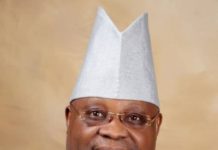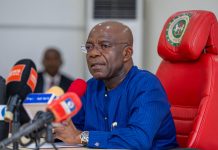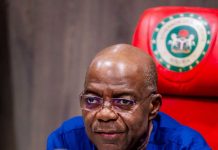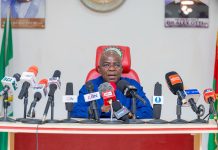The controversy over the $16billion power projects in the country raged on yesterday with a highly-placed source linked with the Niger Delta Power Holding Company (NPDHC) claiming that between $$8.4billion and $8.58billion, out of the projected cash, was allocated.
The release of the $8.58billion was between 2005 and 2018, which covered about 13 years (2005-2018) under the administrations of ex-President Olusegun Obasanjo, ex-President Umaru Yar’Adua, ex-President Goodluck Jonathan and President Muhammadu Buhari.
The cash backing had included $2.2billion from 2005- 2007; $600million in 2008; about $5.37b released from 2010/2011 to date; $150m-$200m made available to NNPC by CBN; and about $80million for Ibom Plant.
It was also learnt that the 25 per cent contribution by the Federal Government to Mambilla Hydro-Power Plant , amounting to about $1.8billion- $2billion, was not released, until President Muhammadu Buhari resolved the challenge.
According to a fact-sheet obtained by our correspondent, the National Integrated Power Project (NIPP) was conceived in 2005 with an original plan for the construction of seven medium size power plants in the Niger Delta.
The scope was later changed to 10 power plants. NDPHC was floated and given a private structure organ for effective delivery.
The document indicated that the projects were expected to cover 10 plants to generate 5,000 Megawatts of electricity; construction of more than 7,000 km (330KVA-132KV levels) transmission lines; 350 distribution projects and gas pipelines, among others.
The 10 power plants in the schedule were sited in Sapele; Ihovbor; Gbarain; Omoku; Egbema; Calabar; Geregu II; Omotosho II; Olorunsogo II; Alaoji.
The 11th project on the radar of the Federal Government was ALSCON Power Plant which was encumbered by a legal crisis, forcing the government to opt out.
The source said: “The records are there, the cash for the projects since 2005 amounted to about $8.58billion and not $16billion as being erroneously bandied.
“The cash backing had included $2.2billion from 2005- 2007; $600million in 2008; about $5.37b released from 2010/2011 to date; $150m-$200m made available to NNPC by CBN; and about $80million for Ibom Plant.
“In fact, as at 2007, the then Accountant-General of the Federation had publicly announced that $2.2billion was released for the NIPP projects.
“As at the time the controversy over NIPP projects came up and the probe began, the amount released had risen to $2.8billion.
“About 25 per cent of the cash was mobilisation fees to the contractors in line with due process.
“The remaining 75 per cent was in letters of credit. The cash was not given to anybody but the money was set aside in the bank where those engaged in various projects can access the funds. This process was put in place to serve as a guarantee that Nigeria will not renege on the contracts.
“These firms drew from the funds whenever their projects reached certain threshold of completion. Everything was domiciled in the Central Bank of Nigeria (CBN).”
“As at the time the probe started in 2008, only $2.8billion had been made available from the Excess Crude Account. It was glaring to all that the probe stalled all the power projects for about three years and since the contracts were all international, the nation must pay for the consequences.
“During the probe, most of the equipment for the power projects were stuck in Onne, Warri, and Tin Can Island ports until the administration of ex-President Umaru Yar’Adua set up a structure, headed by ex-President Goodluck Jonathan(his erstwhile deputy) to address the challenges associated with the power projects.”
Concerning how the $8.58billion was allocated, the source gave the highlights as follows:
About $4.4billion—Power Plants(5,000MW at less than $1m per MegawattAbout $2billion for Transmission LinesAbout $1.5billion for 350 distribution projects$600million -$700million for gas pipelines$80million loan from the Excess Crude Account(ECA) for Ibom Power Plant which resulted in an interest-free debenture
“The Mambilla Hydro Power Project was an initiative of the Ministry of Power; it had nothing to do with NIPP. Later on, the government said the project should be brought into NIPP. The government was looking at 25 per cent contribution of about $1.8billion to $2billion and the cash was not released by the Obasanjo, Yar’Adua, and Jonathan administrations.”
On how many of the projects have been completed, the source said about six and half out of the 10 power plants – Sapele, Ihovbor, Geregu II, Olorunsogo II, Calabar, Omotoso – and a part of Gbarain had been completed.
“The remaining are Alaoji, Egbema, Omoku and a section of Gbarain (which is the smallest power plant in the country).
The fact-sheet on NDPHC website last night confirmed that “contracted commitments totaled US$7.385 billion of the over $8.58billion
“The NDPHC said: “In August 2005, the National Council of State and the National Assembly approved an initial funding of US$2.5 billion for NIPP from the “Excess Crude Oil Account” (ECOA) which statutorily belongs to the Federal, state and local governments. The Federal Government therefore incorporated Niger Delta Power Holding Company Limited (NDPHC) as a limited liability company to serve as the legal vehicle to hold the NIPP assets using private sector-oriented best business practices.
“Following the 2007 change in administration at the Federal level and in many states, the funding arrangements for NIPP were subjected to intensive legal, political and financial scrutiny, resulting in over two-year interruption in funding for the projects.
“At the time of the suspension, US$2.8 billion was already invested in NIPP, including US$1.78 billion in funded letters of credits which allowed some of the projects to continue despite the funding interruption. Contracted commitments totaled US$7.385 billion.
Also, the NDPHC claimed that many transmission lines and distribution projects had been completed and put to use.
It said: “The NIPP transmission projects were majorly awarded in 2006. These projects include transmission substations and lines. As at May 2016, the overall completed 330kV transmission line is 1336.9KM (against contracted 1634.4KM) representing 82% completion. Completed 132kV transmission line is 405.5KM (against contracted 719.3KM) representing 56% completion.
“In addition, the overall completed 330/132kV transmission substation capacity is 3810MVA (against contracted 6000MVA) representing 64% completion, while completed 132/33kV transmission substation capacity is 1920MVA (against contracted 3100MVA) representing 62% completion.
“The following transmission substations and lines have been completed and energized:
1x150MVA, 330/132kV Ihovbor substation (Lot 19-2A) – energised 11th March 2016132kV Ihovbor substation line bay (Lot 19-1B) – energised 11th March 2016132kV DC Ihovbor – Okada transmission line (Lot 19-4) – energised 11th March 20162x40MVA, 132/33kV Okada substation (Lot 19-1A) – energised 2nd April 20162x60MVA, 132/33kV Agbor substation (Lot 8-B) – energised 15th March 2016
On distribution, the NDPHC document said: “A total of 296 No. distribution projects grouped into 43 Lots spread throughout the country were awarded in February, 2007. Each of these projects included injection substations of varying capacities, ranging from 2.5 MVA through 7.5 MVA to 15 MVA, with associated 33 kV and 11kV distribution lines complete with CSP transformers to serve numerous customers across the country. Apart from the original scope, there have been a good number of distribution intervention projects across the country, totalling 72 to date, to meet peculiar needs.
“A breakdown of the projects and completion status of each component is given below:
S/N QTY AWARDED COMPLETED % COMPLETION
96No. Substations 282No. 95.22,198.16km 33kV lines 2,170.5km 98.74,645.28km 11kV lines 3,497.67 75.324,996No. CSP Transformers 19,756 795No. 100KVA Transformers3No. 200KVA Transformers31No. 300KVA Transformers159No. 500KVA Transformers 24No
Regarding alleged fraud which characterized the NIPP projects, the source added: “When this administration of Buhari came into power, one of the first advisory notes it acted on was to set up a committee to go round and inspect all the NIPP projects with a proviso that if any project was inflated by $1, those connected with it should be arrested.
“The committee went round and its members were shocked by what they met on ground. Up till now, the committee has not made a copy of its report available to NDPHC for input.
“All those projects you said were awarded by Obasanjo, ex-Ministers Liyel Imoke, Segun Agagu and others followed due process and they were awarded by the Federal Executive Council. It was not as if funds were paid into the private accounts of anybody as being insinuated.”
Source:The Nation









